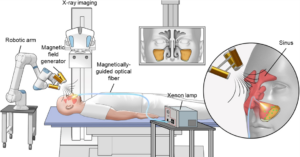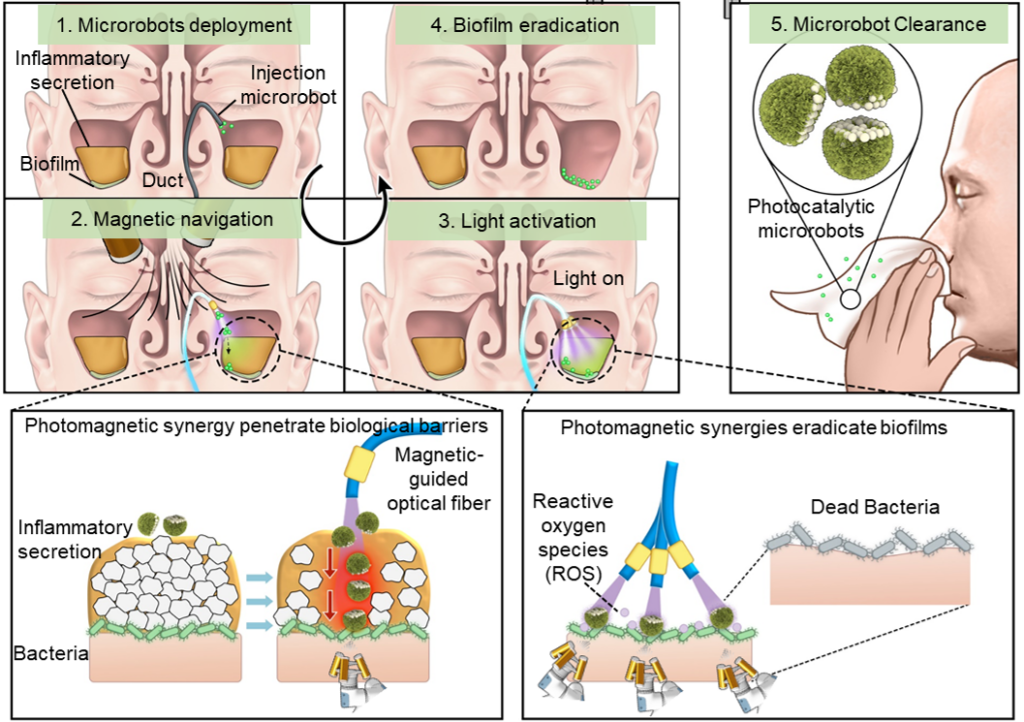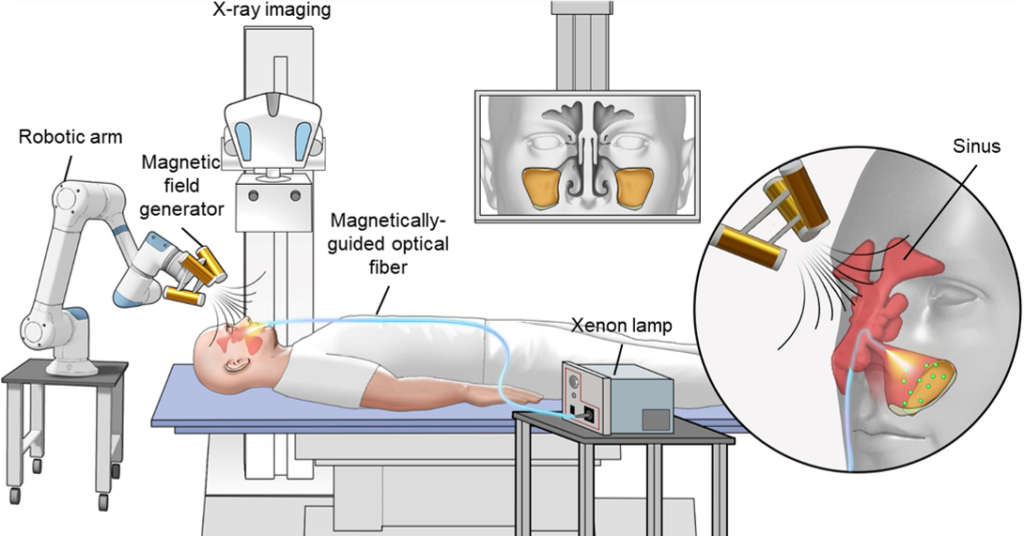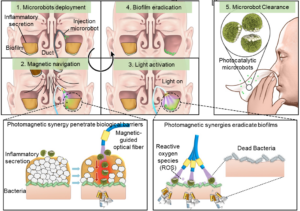CUHK
News Centre
CUHK develops groundbreaking microrobot therapy to combat persistent sinus infections
A collaborative research team led by Professor Zhang Li from The Chinese University of Hong Kong (CUHK)’s Department of Mechanical and Automation Engineering, Professor Wang Ben, an associate professor at Shenzhen University’s College of Chemistry and Environmental Engineering, and Professor Zhang Yabin from Guangxi University, has developed a microrobot-based therapy to tackle one of the most pressing global health challenges: chronic bacterial infections caused by resilient biofilms. The research has been published in prestigious journal Science Robotics.
According to The Lancet, bacterial infections have emerged as the second-leading cause of death worldwide, resulting in millions of deaths each year. Conventional treatment, such as antibiotics, irrigation and surgical puncture, often proves ineffective, leading to potential antibiotic resistance and tissue damage. In response, the research team has developed a novel therapeutic platform using photocatalytic microrobots (CBMRs) that delivers a minimally invasive, highly targeted solution for the treatment of deep-seated bacterial biofilm infections, particularly sinusitis.
The CBMRs are constructed from single-atom copper-doped bismuth oxyiodide (BiOI) and integrate precise magnetic navigation with light-activated photocatalysis. Under an external magnetic field, the microrobots swarm and swiftly navigate to infection sites. Visible light delivered via optical fibre activates antibacterial activity. This enables photothermal effects that reduce mucus viscosity, enhance penetration and generate reactive oxygen species (ROS) for powerful biofilm disruption. In vitro tests demonstrated a dramatic reduction in bacterial survival, from over 90% to less than 1%, showcasing the microrobots’ potent bactericidal efficacy.
Using a rabbit sinusitis model, the team validated the treatment’s effectiveness. The microrobots successfully penetrated dense inflammatory secretions and disintegrate biofilms. The treatment restored healthy sinus tissue, reduced inflammation and minimised fibrosis. Additionally, the treatment showed excellent biocompatibility, with no visible mucosal damage and cell viability exceeding 90% after light exposure for 20 minutes.
Professor Zhang said: “Our goal was to develop a precise, non-invasive solution that overcomes the limitations of conventional treatments. This microrobot platform not only demonstrates impressive antibacterial capabilities but also presents exciting opportunities for safe and targeted treatment of other deep-seated infections. The breakthrough represents a significant milestone in microrobotic therapy, providing a targeted and minimally invasive solution for chronic infection treatment. It paves the way for clinical applications in otolaryngology and beyond.”
This study was supported by the Research Grants Council of Hong Kong (RGC), the Croucher Foundation, the National Natural Science Foundation of China, the Shenzhen Science and Technology Program, as well as the SIAT–CUHK Joint Laboratory of Robotics and Intelligent Systems and the Multi-scale Medical Robotics Center (MRC) under the InnoHK research platform.

Under an external magnetic field, the microrobots swarm and navigate rapidly to infection sites. Visible light delivered via optical fibre activates antibacterial activity, enabling photothermal effects that reduce mucus viscosity and enhance penetration and generation of reactive oxygen species (ROS) for powerful biofilm disruption.








